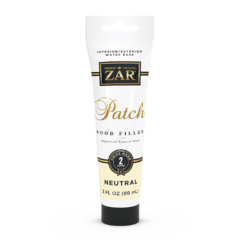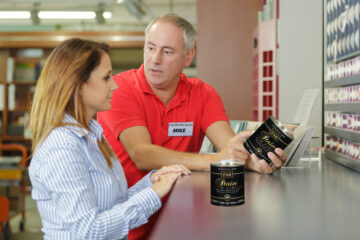
When it comes to polyurethane, there are two types to choose from: oil-based and water-based — with the latter being the most recently developed. One question that often arises when using water-based polyurethane is how long you should wait between coats.
This will depend on a few factors, such as the type of surface you are coating, how thick your first coat is and the humidity and temperature of the environment. Let’s take a closer look at when and how to use water-based polyurethane for your projects.
What is Polyurethane?
Polyurethane coatings are made by mixing polyurethane resin with alkyd resin, and the combination results in a varnish formula that is more durable than either component on its own. This increased durability makes a polyurethane coating heat-resistant, scratch-resistant and water-resistant, making it a good choice for furniture and other household objects.
Both oil-based and water-based polyurethane coatings are available on the market, with the water-based coating being more environmentally-friendly.
Water-Based Polyurethane vs. Oil-Based Polyurethane
Depending on your demands, water-based and oil-based polyurethane coatings are going to serve distinct purposes, depending on your demands. With this in mind, it’s critical that you know the distinctions between the two so that you can apply them correctly.
Oil-based polyurethane is a tried-and-true option that has been around for a long time. It’s durable and resistant to damage. Oil-based polyurethane coating leaves a thicker layer, so you’ll need fewer coats than you would when using water-based poly. Once it’s dry, it also takes on an amber hue, adding warmth to wood items.
Due to its thicker formula, oil-based polyurethane is slower-drying. Therefore, if you want the job done quickly, then it may not be the best option. It also has higher VOC levels, which may be an irritant for some. It must be used in well-ventilated areas to be safe.
Water-based polyurethane is a more environmentally-friendly choice because it releases fewer VOCs, and it’s also safer for your health.
The water-based polyurethane solution isn’t as thick as an oil-based one, so it generally dries much faster. Water-based poly is also easier to clean up compared to oil, as it requires only soap and water.
Water-Based Polyurethane Uses

Water-based polyurethane with a high gloss can be used on wood cabinets, furniture, interior wood siding and hardwood floors. It dries quickly and provides a durable finish that can withstand the everyday use that takes place in a modern home.
A transparent finish — whether initially stained or not — adds richness and depth to wood cabinetry, furniture and trim, while also protecting it from knocks, scrapes and the elements. It can be used on exotic hardwoods, including Teak, Brazilian Walnut and similar wood types.
How Many Coats of Water-Based Polyurethane are Necessary for a Project?

Two coats of finish are suggested for most interior projects. When sealing floors, you should apply three coats. However, do not apply more than two coats in one day. 220 grit sandpaper should be used between coats to remove any air bubbles, but avoid using steel wool. Before applying additional coats, vacuum the surface and wipe it clean with a tack cloth in order to remove all dust.
How Long to Wait Between Coats?
Water-based polyurethane requires at least two hours of dry time between coats, and you should only apply two coats in a day. It’s important to remember that drying time is affected by temperature and humidity. The ideal temperature range for applying water-based poly is between 60 and 90 degrees Fahrenheit, with a humidity level below 60%.
For flooring, the same instructions apply — but you need to wait at least 24 hours after the last coat before subjecting the floor to light traffic. Three to five days should be allowed for medium traffic, and the poly should be dry for a full week before normal foot traffic is permitted again.
How is Water-Based Polyurethane Utilized on Exterior Projects?

Water-based exterior grade polyurethane retains all the advantages of interior poly — including water clean-up — but has the added protection of UV absorbers and antioxidants to extend the life of the wood and fiberglass. This product can be used on most exterior wood surfaces, including:
Gables
Metal and wood patio furniture
Wood siding
Steel and fiberglass entry doors
It is recommended that three coats of exterior poly be applied for outdoor use, due to the harsh conditions it is expected to experience. While interior polyurethane can be used on some outdoor projects, exterior poly should not be used indoors, with the exception of sealing window sills that receive direct sunlight. In low light conditions, exterior water-based poly can leave behind a whitish hue.

Trust in ZAR® for Your Water-Based Polyurethane Needs
ZAR® is part of UGL Industries, an 89-year-old company that specializes in high-quality, planet-friendly and innovative coatings. Our water-based interior and exterior polyurethane provide a long-lasting, durable finish with minimal VOC emissions and a self-leveling formula that makes sanding between coats unnecessary.
Contact us today to find a retailer near you and discover why paint professionals across the U.S. depend on ZAR® stains and sealers to keep their customers satisfied.



